A radiator is an integral part of engine performance, so radiator leaks should be addressed immediately, or else it could lead to bigger and more expensive problems.
If an issue does arise with the engine’s cooling system, here are some tips from Philkotse.com that will help you narrow down the cause to an actual radiator leak:
1. See if temperature gauge shows excessive heat
It’s normal for engines to grow hot with use since it has an optimal operating temperature where it works at peak performance and efficiency. The radiator’s job is to help the circulating coolant disperse excess heat so that the ideal operating temperature for the engine is maintained.
In the event of a radiator leak, the level of available coolant will drop. This causes engine temperature to rise to dangerous levels, which can potentially lead to engine damage. If the engine overheats warning light goes on, that’s the first sign of a problem with the engine cooling.
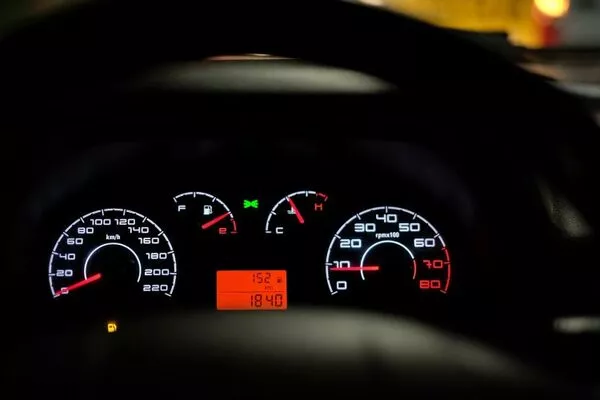
If you notice that the temperature gauge is at high lately, there could be a radiator leak
2. Check for puddles under your vehicle
If there is a radiator leak, coolant escaping from the closed system is bound to find its way into the crevices of the vehicle’s under-chassis and drip out. After parking the car for an extended period of time, such as overnight, check underneath to see if there is an unusual puddle forming on the ground.
Take note, however, that other fluids can also be found dripping out from under the car, such as condensed water from the air conditioning system.

Know that not everything that drips out of your chassis is coolant
>>> Read more: Basic care tips for car radiator that every driver should know.
3. Inspect the puddle and check what type it is
If you do notice a puddle that wasn’t there before you parked, you may need to take a closer look. Refer to the descriptions below to figure out the type of fluid you might find leaking out from under your car:
- Green or orange – Engine coolant
- Yellow – Fresh motor oil
- Dark brown or black – Used motor oil
- Transparent – Water

You need to touch the fluid for a closer inspection
>>> Related: 3 symptoms of a bad radiator cap & replacement cost
4. Note coolant level on the reservoir
If you are still unsure if you have a radiator leak, check the coolant tank while the engine is still off. Top up the fluid until it’s just below the highest level indicator, then mark it with a washable marker. Use the car as you would normally do, going about your daily trips such as getting to work and running errands.
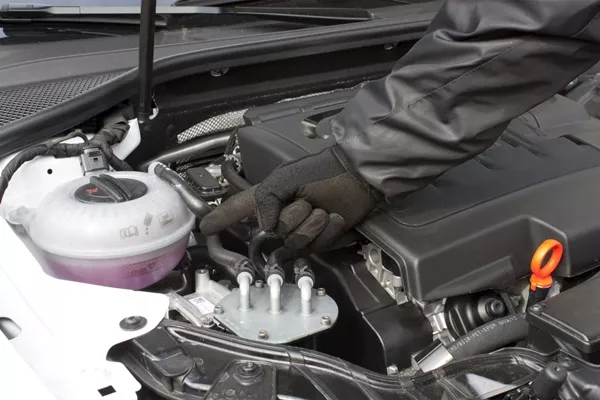
If you are still unsure if you have a radiator leak, check the coolant tank while the engine is still off
After you’re done with all that, park the car and let the engine cool down for a few hours. Check the coolant level again. If there’s a noticeable drop in the coolant level inside the reservoir, then you’ve confirmed a leak in your radiator.
The next step would be getting to work plugging that leak, in order to prevent the engine from wasting coolant and running hotter, risking even bigger damage.
>>> Also check: 6 Steps to Fix Car Radiator.
5. How to fix leaking car radiator
Step 1. Let the engine compartment cool down
This is a vital step regardless of whatever it is that you intend to do under the hood since working on a hot engine increases the risk of injury in your part. Safety gear is also a must, such as a pair of thick gloves and sturdy goggles. You also might want to put on some overalls or a jumpsuit for work clothes.
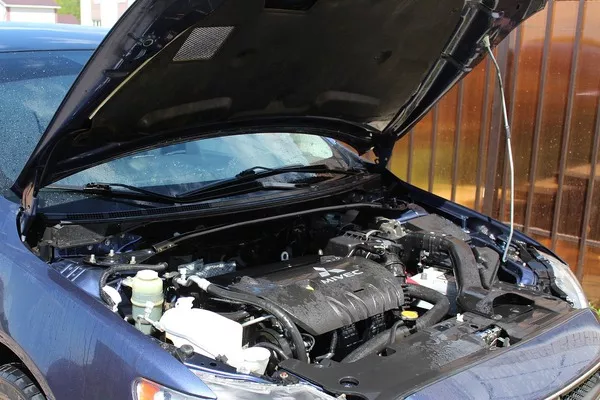
Let the engine compartment cool down is a vital step
Step 2. Wash the radiator
Using a hose, wash down the radiator, as the leak is easier to find when the radiator is clean. Then use a paper towel or a clean, soft rag to wipe away the remaining grime and moisture from the coolant tank. Look for signs of damage, such as cracks, while you clean the radiator.
Step 3. Start the engine
Once the radiator is clean, have someone else start the car as you observe the engine bay. With the engine running, stand in front of the open hood and monitor the radiator. Since some moisture remains from the house down, there will be some steam and even fluid coming out of the radiator.
You might also hear sounds like a hissing noise that’s coming out of the leak.
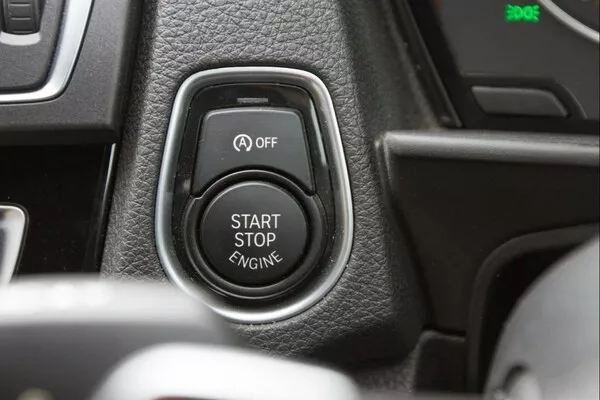
Have someone help you out and sit behind the wheel to start the engine for you
>>> Worth reading: The Safest Way on How to Put Water in a Car Radiator & Other Essential Facts.
Step 4. Use commercial sealant
You can use a commercial sealant to plug a radiator leak. If the sealant’s packaging does not include instructions for use, you can use these steps:
- Make sure that your engine is cool enough for handling, by performing the repair a few hours after the engine has been switched off. This also ensures that the coolant inside the radiator has settled and is not subject to high heat and pressure that can scald you.
- Take the radiator cap off and pour the sealant right into the cooling system.
- Add in a fresh mixture of coolant and distilled water. You can also use this to top up your coolant tank.
- Put the radiator cap back and start the engine.
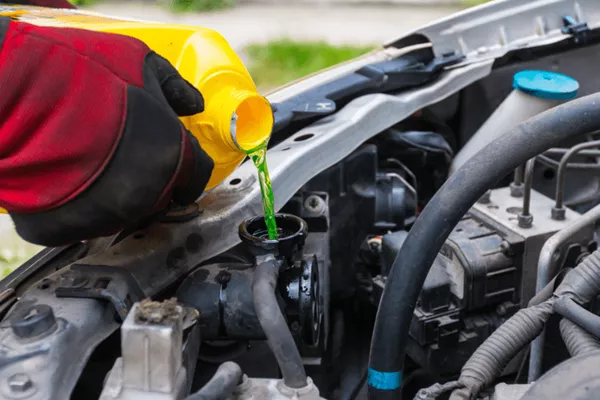
You can use a commercial sealant to plug a radiator leak
The sealant should now work its way inside the radiator, sealing cracks as it circulates inside the cooling system.
However, using commercial sealant might not be a long-term solution, especially for significantly larger damage; in instances like this, seeking professional assistance is the better option to ensure that the engine suffers no permanent damage.
Follow Philkotse.com for more useful car maintenance tips and keep your beloved vehicle in healthy condition!
Recent posts
- Causes of water-damaged engine and tips to protect your car Jul 11, 2019
- 4 common reasons why car engines lose horsepower over time Jun 25, 2019
- 5 simple tips to maximum your car engine's performance Aug 16, 2022
- What’s your Engine Oil Telling You? Nov 18, 2022
- Distilled water vs Coolant: Which is the best product for your radiator? Mar 06, 2021












